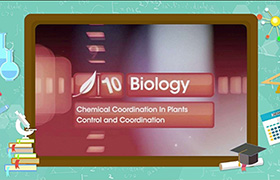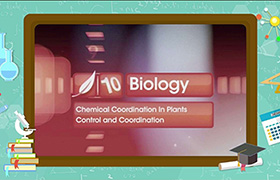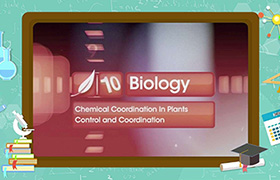CBSE Class 10 Answered
What is the cause of nastc movement found in mimosa pudica plant
Asked by saradamahapatra9999 | 23 Oct, 2020, 16:22: PM
- The movement of Mimosa pudica is driven by turgor pressure, which is the pressure exerted on the cell wall because of the movement of water into the cell.
- The environmental stimuli induces an electrical signal (action potential) transmitted from touch-sensitive cells.
- The action potential moves from cell-to-cell until it reaches specialized “motor cells” at the base of each leaf-blade or leaflet.
- From here, movement occurs as the action potential translates into a chemical signal, which causes rapid efflux of potassium (K+) followed by water transport out of the motor cells due to osmosis.
- The greater the intensity, the farther the signal will travel, resulting in greater movement.
- As a result, there is a loss in cell pressure and cell collapse causing the leaves to close.
- The leaves will usually return to their original orientation after 10-15 minutes.
Answered by Sheetal Kolte | 24 Oct, 2020, 12:19: PM
Application Videos
Concept Videos
CBSE 10 - Biology
Asked by rashmij34 | 04 Mar, 2024, 12:04: PM
CBSE 10 - Biology
Asked by saradamahapatra9999 | 23 Oct, 2020, 16:22: PM
CBSE 10 - Biology
Asked by sujalkumar7779891684 | 07 Oct, 2020, 19:51: PM
CBSE 10 - Biology
Asked by acshanadhana15 | 30 Sep, 2020, 17:39: PM
CBSE 10 - Biology
Asked by acshanadhana15 | 30 Sep, 2020, 17:22: PM
CBSE 10 - Biology
Asked by arindeep.singh | 09 Sep, 2020, 16:47: PM
CBSE 10 - Biology
Asked by Snehashivpuje | 22 Jun, 2020, 16:39: PM
CBSE 10 - Biology
Asked by njthrisha50495 | 27 Apr, 2020, 12:49: PM
CBSE 10 - Biology
Asked by subbukum | 22 Jan, 2020, 19:13: PM
CBSE 10 - Biology
Asked by malasarathy75 | 16 Jan, 2020, 15:24: PM








